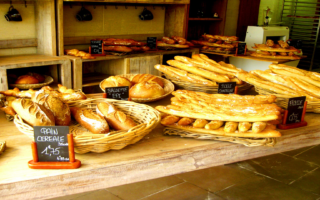Historic superstar
Visit the lovely city of Reims and find out why champagne will always be the most famous wine in the world…
I visited Reims on one of my first ever wine buying trips and it quickly became one of my favourite vinous destinations. What I found was a civilised burg rather than an exuberant bohemia, but the townspeople are generous with smiles, bonjours’ are plentiful and wherever you go, there is always a flute of champagne to be drunk. Thousands of thirsty tourists flock to Reims every year to visit the city’s prestigious wine cellars. Each champagne house has thought long and hard about where it stands on welcoming these people. The rule is that either they do or they don’t. And there isn’t much in between. I remember visiting the Louis Roederer stand just outside the main exhibition hall at the Vinexpo trade fair in Bordeaux in 2005. As we approached, we were greeted by two surly men behind a deskdisplay cabinet containing dummy bottles of the famous vintage champagne, Cristal. “Can we help you?” they asked uninvitingly. As it happened, yes they could. My companion was a Roederer customer; someone the house regards as a regional ambassador’ for the Roederer brand in the UK. This was explained, the chief executive was summoned, the curtains parted and we entered a world of champagne, caviar and dancing girls. Houses like Louis Roederer, Krug and Charles Heidsieck are exclusive crews. Roederer’s policy on welcoming members of the public for tastings has relaxed in recent years, but I would still stick to the houses that advertise tours and tastings. They all make good wines and offer well organised cellar tours. Each is instructive, slick and propagandist. If nothing else, you will leave understanding why champagne is so enormously successful. The best place to begin a discovery of Reims’ champagne houses is Champagne Ruinart, the region’s oldest n�gociant house and cradle of the champagne industry. In the early 18th century the young Benedictine monk Dom Thierry Ruinart observed the pioneering work on blending undertaken by fellow scholar Dom P�rignon in the Abbaye de Hautvillers. The Ruinart family had been successful drapers in Reims, but foreseeing problems in that industry, Dom Ruinart’s nephew Nicholas decided to invest in the production of champagne wine. His first sales date from 1 September 1729. Nicholas’ son Claude moved the premises to its current site, making use of the pre-existing Gallo-Roman chalk pits for the maturation and storage of the wine. The eight kilometres of Ruinart cellars are some of the most impressive in Champagne. Now the jewel in the crown of the mighty Mo�t-Hennessy group, Ruinart retains its autonomy and unique style. The wines are classy but rather expensive, and include a high proportion of chardonnay from the house’s own grand cru vines. There is a free tour that includes a tasting, but I would pay for an instructive comparative tasting of many of the house’s cuv�es. You may not choose to buy the wines, but this is an excellent opportunity to taste some of the region’s finest champagnes in unparalleled glamour.
Share to: Facebook Twitter LinkedIn Email


